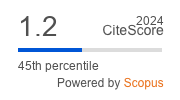Subacute toxicity, local irritant, and allergenic effects of Hedysarum semenowii extract
https://doi.org/10.33380/2305-2066-2025-14-4-2159
Abstract
Introduction. Hedysarum semenowii Regel & Herder of the genus Hedysarum L., possess a rich phyto-chemical profile and hold promise as a foundation for developing novel pharmaceuticals. Despite the recognized pharmacological activities of various Hedysarum L. species, their safety profiles have not been sufficiently studied, necessitating further investigation to evaluate their toxicity and potential adverse effects. To address this gap, a study was conducted to assess the subacute toxicity, local irritant effects, and allergenicity of Hedysarum semenowii extract, with the aim of determining its safety and therapeutic potential.
Aim. Determination of subacute toxicity, local irritant effect and allergenicity of the Hedysarum semenowii Regel & Herder extract.
Materials and methods. The subacute toxicity study was performed using outbred rats, with the extract from aerial part of the plant administered orally at doses of 500, 2000, and 5000 mg/kg over a 28-day period. The condition of the animals was monitored throughout the study. At the conclusion of the subacute toxicity evaluation, pathological changes in the liver and kidneys of the experimental animals were examined. Local irritant and allergenic effects were assessed in rats and guinea pigs, respectively, employing visual inspection and the Draize scoring system.
Results and discussion. The 28-day subacute toxicity study revealed no significant toxicity, mortality, or behavioral changes in the animals. Body weight, food consumption, and water intake remained stable across all groups. According to the results of macroscopic and microscopic examination, minor physiological changes were noted in the liver and kidneys, the severity of which correlated with the administered doses of the extract. Furthermore, the extract did not induce skin irritation or allergenic reactions in tests involving rats and guinea pigs.
Conclusion. Hedysarum semenowii extract exhibited low toxicity and an absence of irritant and allergenic effects, affirming its safety and potential for further exploration as a therapeutic agent.
About the Authors
A. S. KelekeKazakhstan
94, Tole Bi str., Almaty, 050012
L. N. Ibragimova
Kazakhstan
94, Tole Bi str., Almaty, 050012
Z. B. Sakipova
Kazakhstan
94, Tole Bi str., Almaty, 050012
R. I. Kulmanbetov
Kazakhstan
94, Tole Bi str., Almaty, 050012
T. S. Nurgozhin
Kazakhstan
94, Tole Bi str., Almaty, 050012
M. K. Suleimenov
Kazakhstan
94, Tole Bi str., Almaty, 050012
G. S. Ibadullayeva
Kazakhstan
94, Tole Bi str., Almaty, 050012
A. L. Аkhelova
Kazakhstan
94, Tole Bi str., Almaty, 050012
A. Yu. Grishina
Russian Federation
14A, Professora Popova str., Saint-Petersburg, 197022
References
1. Builders P. F., editor. Herbal Medicine. London: IntechOpen; 2019. 314 р. DOI: 10.5772/intechopen.69412.
2. Maung T. M., Deborah S., Tun A. A., Jian T. S., Subramaniam Y., Pillai J., Johnson J. Traditional medicine vs. modern medicine in rural area of Kedah State, Malaysia. IOSR. 2019;14(1):5–8.
3. Wanjiru J. N., Maitho T. E., Mbaria J. M., Moriasi G. A. Subacute Toxicity Effects of the Aqueous Shoot Extract of Yushania alpina (K. Schum.) W. C. Lin in Sprague Dawley Rats: An Appraisal of Its Safety in Ethnomedicinal Usage. Journal of Toxicology. 2022;6283066. DOI: 10.1155/2022/6283066.
4. Keleke A. S., Ibragimova L. N., Zhumashova G. T., Sabitova A. G., Sultanov E. Sh., Sakipova Z. B. Kazakh plant species of the genus Hedysarum L.: distribution, botanical description and profile of pharmacological activity. Pharmacy of Kazakhstan. 2023;3(248):297–306. DOI: 10.53511/pharmkaz.2023.74.33.045.
5. Behera S., Kamila P. K., Rout K. K., Barik D. P., Panda P. C., Naik S. K. An efficient plant regeneration protocol of an industrially important plant, Hedychium coronarium J. Koenig and establishment of genetic & biochemical fidelity of the regenerants. Industrial Crops and Products. 2018;126:58–68. DOI: 10.1016/j.indcrop.2018.09.058.
6. Gao X., Ren C., Li L., Zhao H., Liu K., Zhuang M., Lv X., Zhi X., Jiang H., Chen Q., Zhao X., Li Y. Pharmacological action of Hedysarum polysaccharides: a review. Frontiers in Pharmacology. 2023;14:1119224. DOI: 10.3389/fphar.2023.1119224.
7. Liu Y., Zhang J., Wen R., Tu G.-Z., Chen H.-B., Liang H., Zhao Y.-Y. Anti-inflammatory and antiproliferative prenylated chalcones from Hedysarum gmelinii. Journal of Asian Natural Products Research. 2018;20(11):1009–1018. DOI: 10.1080/10286020.2018.1450390.
8. Vesnina A., Milentyeva I., Le V., Fedorova A., Altshuler O., Prosekov A. Quercetin isolated from Hedysarum neglectum Ledeb. as a preventer of metabolic diseases. Foods and Raw Materials. 2024:192–201. DOI: 10.21603/2308-4057-2025-1-633.
9. Cao J.-N., Han C.-R., Yang Y.-C. Characterization of the complete chloroplast genome of Hedysarum polybotrys var. alaschanicum (Fabaceae) and its phylogeny. Mitochondrial DNA Part B. 2021;6(11):3312–3313. DOI: 10.1080/23802359.2021.1994900.
10. Keleke A. S., Turuspaeva Zh. Zh., Ibragimova L. N. The study of acute toxicity of Hedysarum semenowii Regel & Herder extract. In: The XIV All-Russian scientific conference with international participation "Young pharmacy – the potential of the future". March 28 – April 2, 2024. St. Petersburg: Saint Petersburg State Chemical-Pharmaceutical University; 2024. P. 430–431. (In Russ.)
11. Jumabayeva A. M., Kozhamzharova A. S., Ibragimova L. N., Terninko I. I., Surbeeva E. S., Sakipova Z. B. Screening of the Alcohol Fraction of Ferula akitschkensis B. Fedtsch. ex Koso-Pol. by GC/MS Method. Drug development & registration. 2023;12(3):80–88. (In Russ.) DOI: 10.33380/2305-2066-2023-12-3-80-88.
12. Kadyrbay A., Sakipova Z. B., Krishtanova N. A., Ibragimova L. N., Ibrayeva M. B., Sakipov A. E., Bekbolatova E. N., Ridvanov Ch., Sermukhamedova O. V., Adilbek Y., Seiduali T. Y., Anartayeva A. K., Kazim A. U. Development of Optimal Technology for Drying Herbal Medicinal Raw Materials from Autumn Wormwood (Artemisia serotina Bunge) Based on Comparative Analysis. Drug development & registration. 2023;12(4):80–90. (In Russ.) DOI: 10.33380/2305-2066-2023-12-4-1578.
13. Keleke A. S., Sakipova Z. B., Ibragimova L. N., Turuspaeva Zh. Zh. Method for obtaining a plant extract from the grass of the Semenov’s kopeck (Hedysarum semenowii Regel & Herder). Patent of the Republic of Kazakhstan No. 9815. 22.11.2024. Available at: https://gosreestr.kazpatent.kz/Utilitymodel/Details?docNumber=398329/ Accessed: 03.07.2025. (In Russ.)
14. Mironova A. N. Guidelines for conducting preclinical studies of medicines. Part 1. Moscow: Grif i K; 2012. 944 p. (In Russ.)
15. Wilson S. L., Ahearne M., Hopkinson A. An overview of current techniques for ocular toxicity testing. Toxicology. 2015;327:32–46. DOI: 10.1016/j.tox.2014.11.003.
16. Mochizuki H., Suyama S., Cha J. Y., Ho P.-S., Shimoi A. Optimization of a histamine-induced allergic conjunctivitis model in Guinea pigs. Journal of Pharmacological and Toxicological Methods. 2022;113:107133. DOI: 10.1016/j.vascn.2021.107133.
17. Uthirapathy S., Krishnasamy G., Periyasamy G., Elangovan R. Toxicity Profiles of the Hydroalcoholic Seed Extract of Psoralea corylifolia L. (Fabaceae) in Wistar Rats. Medicina Balear. 2022;37(3):120–126. DOI: 10.3306/AJHS.2022.37.03.120.
18. Cossetin J. F., Spring de Almeida A., de David Antoniazzi C. T., Qader Kudsi S., Martiele Engelmann A., Gaube Guex C., Sorraila de Oliveira J., Theisen M. C., Santos Ritter C., Henrique Doleski P., da Silva Brum E., Padilha Dalenogare D., Spat Peres D., Guedes Pintos F., Melazzo de Andrade C., Bitencourt Rosa Leal D., Marchesan Oliveira S., de Freitas Bauermann L., Cougo Riéffel R., Rorato Sagrillo M., Kolinski Machado A., Soares Santos A. R., Trevisan G. Hydroalcoholic Extract of Leaf of Arachis hypogaea L. (Fabaceae) Did Not Induce Toxic Effects in the Repeated-Dose Toxicity Study in Rats. Regulatory Toxicology and Pharmacology. 2020;115:104683. DOI: 10.1016/j.yrtph.2020.104683.
19. Yu S.-Y., OuYang H.-T., Yang J.-Y., Huang X.-L., Yang T., Duan J.-P., Cheng J.-P., Chen Y.-X., Yang Y.-J., Qiong P. Subchronic Toxicity Studies of Radix Astragali Extract in Rats and Dogs. Journal of Ethnopharmacology. 2007;110(2):352–355. DOI: 10.1016/j.jep.2006.09.024.
20. Song J., Lee D., Min B., Bae J.-S., Chang G. T., Kim H. Safety Evaluation of Astragalus Extract Mixture HT042 and Its Constituent Herbs in Sprague-Dawley Rats. Phytomedicine. 2017;32:59–67. DOI: 10.1016/j.phymed.2017.03.005.
21. Zhang Y., Li Y., Bian T., Sun Y., Zhang Z., Liu T., Gao F., Wang Y., Cao R., Xin E., Yan X. Hedysari Radix Praeparata Cum Melle Repairs Impaired Intestinal Barrier Function and Alleviates Colitis-Associated Colorectal Cancer via Remodeling Gut Microbiota and Metabolism. Journal of Functional Foods. 2023;108:105748. DOI: 10.1016/j.jff.2023.105748.
22. Zhang Y., Niu J., Zhang S., Si X., Bian T.-T., Wu H., Li D., Sun Y., Jia J., Xin E., Yan X., Li Y. Comparative Study on the Gastrointestinal- and Immune-Regulation Functions of Hedysari Radix Praeparata Cum Melle and Astragali Radix Praeparata Cum Melle in Rats with Spleen-Qi Deficiency Based on fuzzy matter-element analysis. Pharmaceutical Biology. 2022;60(1):1237–1254. DOI: 10.1080/13880209.2022.2086990.
Supplementary files
|
|
1. Графический абстракт | |
| Subject | ||
| Type | Исследовательские инструменты | |
View
(4MB)
|
Indexing metadata ▾ | |
Review
For citations:
Keleke A.S., Ibragimova L.N., Sakipova Z.B., Kulmanbetov R.I., Nurgozhin T.S., Suleimenov M.K., Ibadullayeva G.S., Аkhelova A.L., Grishina A.Yu. Subacute toxicity, local irritant, and allergenic effects of Hedysarum semenowii extract. Drug development & registration. (In Russ.) https://doi.org/10.33380/2305-2066-2025-14-4-2159










































